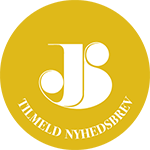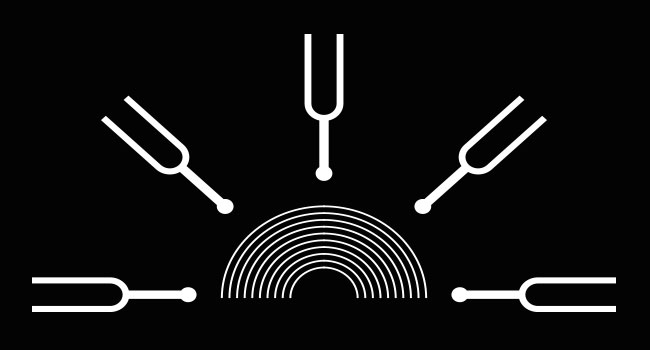How to Calculate Manufacturing Overhead Costs Step by Step
For instance, during months of heavy production, the bill goes up; during the off season, it goes down. Selling overhead relates to activities involved in marketing and selling the good or service. This can include printed materials and television commercials, as well as the commissions of sales personnel. Other categories such as research overhead, maintenance overhead, manufacturing overhead, or transportation overhead also apply. They can accomplish this by purchasing new machinery or retrofitting old machines with the latest technology.
- Variable overhead consists of the overhead costs that fluctuate with business activity.
- Examples of utilities include water, gas, electricity, internet, sewer, and phone service.
- Now let’s understand how you can calculate the overhead cost as we now know the various methods of calculating the absorption rate.
- All such information is provided solely for convenience purposes only and all users thereof should be guided accordingly.
- However, if the company produces more units of the better-selling product than it should, it will incur additional costs.
Indirect Material Overheads are the cost of materials that are utilized in the production process but cannot be directly identified to the product. That is, they are used in smaller quantities in manufacturing a single product. So, it is not purposeful to keep counting them much like direct material. Indirect Material Overhead Costs include the cost of nails, oil, glue, tape, etc. Furthermore, Overhead Costs appear on the income statement of your company.
That is, such expenses are incurred even if there is no output produced during the specific period. Apart from advertising, overhead costs also include production overheads, administration, selling, and distribution overheads. With semi-variable overhead costs, there will always be a bill (a fixed expense), but the amount will vary (a variable expense).
He currently researches and teaches economic sociology and the social studies of finance at the Hebrew University in Jerusalem. Behavior refers to the change in the cost with respect to the change in the volume of the output. For a further discussion of nonmanufacturing costs, see Nonmanufacturing Overhead Costs. Over 1.8 million professionals use CFI to learn accounting, financial analysis, modeling and more. Start with a free account to explore 20+ always-free courses and hundreds of finance templates and cheat sheets.
Example 4- Formula For Manufacturing Overhead
Administrative costs are costs related to the normal running of the business and may include costs incurred in paying salaries to a receptionist, accountant, cleaner, etc. Such costs are treated as overhead costs since they are not directly tied to a particular function of the business and they do not directly result in profit generation. Rather, administrative costs support wave invoicing on the app store 2021 the general running of the business. Examples of variable overheads include shipping costs, office supplies, advertising and marketing costs, consultancy service charges, legal expenses, as well as maintenance and repair of equipment. Expenses related to overhead appear on a company’s income statement, and they directly affect the overall profitability of the business.
- Besides his extensive derivative trading expertise, Adam is an expert in economics and behavioral finance.
- As stated earlier, the overhead costs are the indirect costs that cannot be directly assigned to a particular product, job, process, or work order.
- Besides these expenses, there are certain indirect expenditures that cannot be conveniently identified with the article produced.
- Thus, below is the formula for calculating the overhead rate using direct materials cost as the basis.
- Others are direct costs as wages paid to labor, direct material costing are included within costs of goods sold and are termed as direct costs or direct expense.
- Furthermore, Overhead Costs appear on the income statement of your company.
They include equipment depreciation costs during manufacturing, rent of the facility, land used for inventory, and depreciation of the facility. Note that all of the items in the list above pertain to the manufacturing function of the business. Rather, nonmanufacturing expenses are reported separately (as SG&A and interest expense) on the income statement during the accounting period in which they are incurred. Accurately calculating your company’s manufacturing overhead costs is important for budgeting.
Manufacturing overhead (MOH) cost is the sum of all the indirect costs which are incurred while manufacturing a product. It is added to the cost of the final product along with the direct material and direct labor costs. Usually manufacturing overhead costs include depreciation of equipment, salary and wages paid to factory personnel and electricity used to operate the equipment. Manufacturing overhead (or factory overhead) is the sum of all indirect costs incurred during the manufacturing process. You can calculate manufacturing overhead costs by adding your indirect expenses, such as direct materials and labor, into one total. Manufacturing overhead is added to the units produced within a reporting period and is the sum of all indirect costs when creating a financial statement.
Variable Overhead
The most significant advantage of including manufacturing overhead in your budget is that it lets you see where most of your monthly money goes. They can make informed decisions about their role in the company’s overall operation plan. This will increase productivity levels throughout all departments within an organization’s structure. Manufacturing overhead is also known as factory overhead, production overhead, and factory burden.
Classification of Factory Overheads
When you allocate manufacturing overhead, you assign the costs of indirect labor, materials, and factory expenses to products. The cost of these items will be included in the cost of goods sold (COGS) on your income statement. Manufacturing overhead is a term that refers to all of the costs of manufacturing a product that is not direct labor costs or direct material costs. It includes indirect labor, plant managers’ salaries, and factory rent, among other things. A manufacturing facility’s monthly expense for electricity, for example, will vary depending on production output.
Although increasing production usually boosts variable overhead, efficiencies can occur as output increases. Also, price discounts on larger orders of raw materials—due to the ramp-up in production—can lower the direct cost per unit. The key difference between variable and fixed overhead costs is that if production stopped for a period, there would be no variable overhead while fixed overhead remains.
Manufacturing Overhead: The Indirect Costs
These physical costs are calculated either by the declining balance method or a straight-line method. The declining balance method involves using a constant rate of depreciation applied to the asset’s book value each year. The straight-line depreciation method distributes the carrying amount of a fixed asset evenly across its useful life. The latter is used when there is no pattern to the asset’s loss of value. The reason that manufacturing overhead is an asset is that it creates value for your company. For example, if you pay $100 in rent per month and rent out a workshop for $200 per month, that rent expense can be deducted from taxable revenues as a business expense.
Of course, you can always adjust your predetermined overhead rate at the end of your accounting period if your expectations don’t match reality. Manufacturers must include variable overhead expenses to calculate the total cost of production at current levels, as well as the total overhead required to increase manufacturing output in the future. The calculations are applied to determine the minimum price levels for products to ensure profitability. Utilities such as natural gas, electricity, and water are overhead costs that fluctuate with the quantity of materials being produced. The might increase or decrease depending on the demand for the product in the market.
There are other notifications you can receive by email or in the tool to alert you about activity and task reminders. Our collaborative platform lets you share files and comment with everyone no matter where or when. There’s also workflow automation and task authorization to free up your workers to focus on what matters without jeopardizing quality. Our timesheet feature is a secure way to track the cost and the time your team is putting into completing their tasks. You can even set reminders for timesheets to make sure that everything runs smoothly. As we mentioned above you can track costs on the real-time dashboard and real-time portfolio dashboard, but you can also pull cost and budget data in downloadable reports with a keystroke.
A business may incur such costs at any time, even though the exact cost will fluctuate depending on the business activity level. A semi-variable overhead may come with a base rate that the company must pay at any activity level, plus a variable cost that is determined by the level of usage. These are costs that are incurred for materials that are used in manufacturing but are not assigned to a specific product.
This not only helps you run your business more effectively but is instrumental in making a budget. Knowing how much money you need to set aside for manufacturing overhead will help you create a more accurate budget. There are so many costs that occur during production that it can be hard to track them all. Managers can make better decisions about how much they should spend on things like raw materials and labor. It also makes it easier for them to see whether or not their production line is good overall (or if they need to make changes).
For example, Beta Company spends between $7,200 and $8,800 for “indirect materials,” depending on whether it makes 9,000, 10,000, or 11,000 units. But these are materials that do not directly go into the product; thus, they are indirect costs, which, by definition, are in the category of manufacturing overhead. The company spends $4,000 for insurance over a given period of time whether it makes 9,000, 10,000, or 11,000 units.






